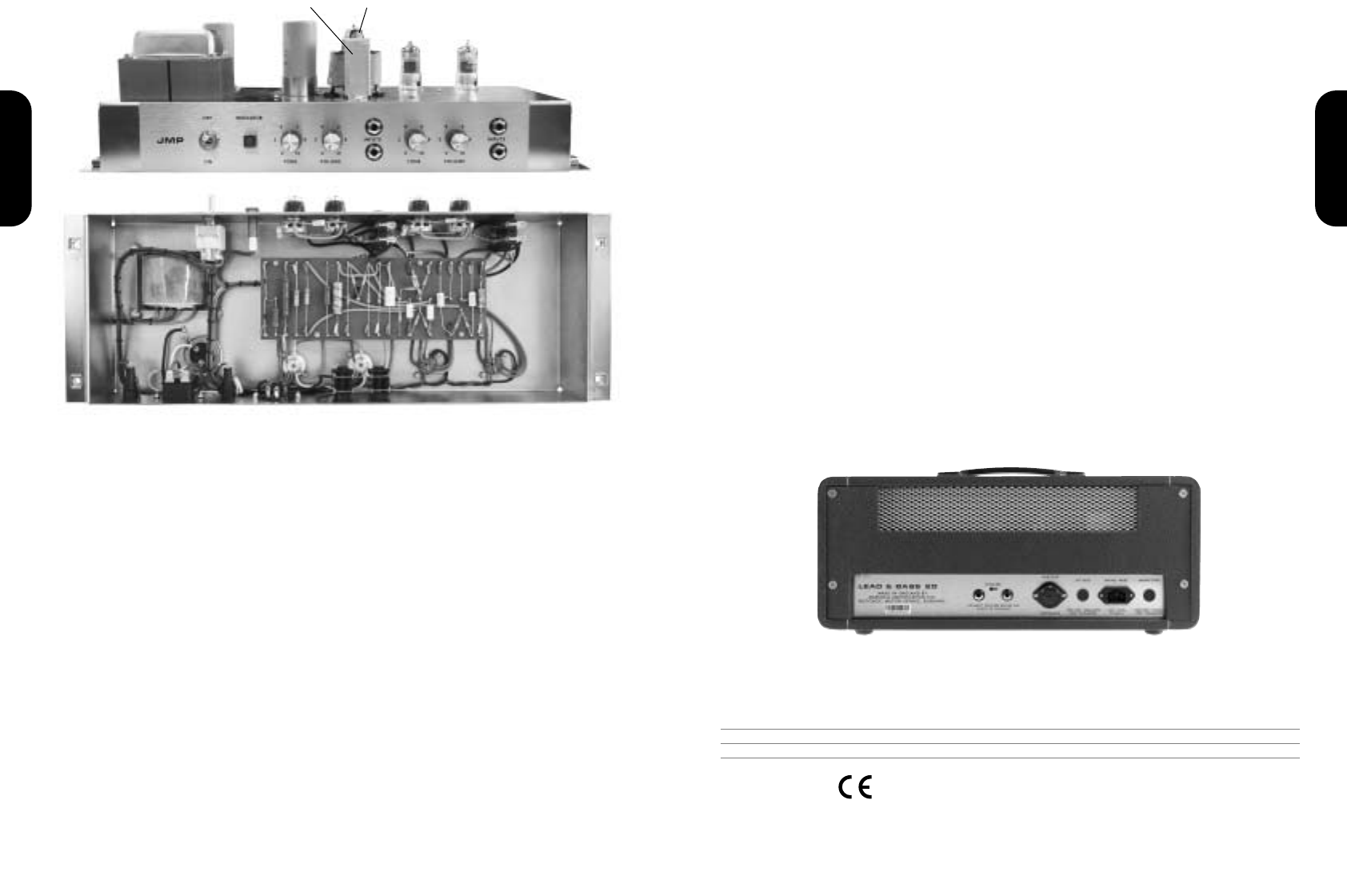
3
Transformers: By the time the 2061 was designed and manufactured, Jim had struck up his now well-
known relationship with transformer manufacturers, Dagnall and Drake. As a result, both the power and
mains transformers used in the original 2061 were supplied by Dagnall.
As you probably know, the output and mains transformers are vital components in an amplifier as they
influence performance, sound and feel. Consequently, we worked extremely closely with our associates in
Dagnall’s R&D department in order to duplicate the original transformers in all areas in the re-issue units. To
do this, we spent a great deal of time and attention studying and analysing the constructional methods and
materials (e.g.: lamination grade, insulation, coil spacing, etc.) used in both transformers so we could match
everything as closely as possible, and also ensure that the all-important electrical characteristics and
performance were identical. With Dagnall’s expert help and dedication, we’ve done exactly that.
Output Transformer: The original 2061 didn’t have an impedance selector of any shape or form,
instead the two speaker output jacks were hardwired directly to the 8 Ohm tap on the transformer – thus
making it possible to use a single 8 Ohm cabinet or two 16 Ohm cabinets in parallel. To make the re-issue
more user-friendly in terms of cabinet compatibility, we have added an impedance selector* to the rear
panel, with three options – 4, 8 or 16 Ohms. This addition offers the user maximum flexibility when it comes
to extension cabinet options.
*Important Note: Adding the impedance selector has no effect on the tonal authenticity of the 2061X
re-issue, it merely adds to its potential flexibility.
Mains (Power) Transformer: In order to satisfy strict current-day safety legislation, the custom-
manufactured Dagnall re-issue transformer we’re using is physically a little larger than the one used in the
original but, as with the output transformer, we went to great lengths to ensure that its performance mirrors
that of the original. We paid particular attention to exactly replicating an effect called ‘regulation’ – which is
the way that the voltage from the transformer that feeds the valve circuitry varies according to load.
Chassis: As in the original, we’re using a box-section chassis made from 16 gauge mild-steel, with butt-
welded corner joints. The steel is also ‘yellow passivated’ – an electroplating process that deposits a coating
of zinc onto the steel to provide lifelong resistance to corrosion.
Front Panel: Gold, brushed anodised aluminium – exactly as the originals we used as references.
Specific details pertaining to the front panel features of the 2061X can be found on page 4 of this manual.
Note: While a few early 2061s boasted Plexiglas front panels, gold, brushed anodised aluminium panels
were more commonplace on this model as we stopped using Plexiglas for front panels in mid 1969.
Rear Panel: Again gold, brushed anodised aluminium – exactly as the originals we used as references.
Specific details pertaining to the rear panel features of the 2061X can be found on page 5 of this manual.
Cabinet Construction: High-grade, flawless (knot-free) Baltic birch ply with fingerlocked (a.k.a.
comb) joints for maximum strength. The main cabinet frame (both sides, top and bottom) and the front baffle
are constructed from 12mm ply while the back of the cabinet is 9mm ply. All edges have a 22mm radius.
Cabinet Cosmetics: The black Levant, beading, piping and small 6" gold logo are exactly as the
original.
Rear Panel Improvements
The features listed below are all ‘deviations’ from the original that have been added for user-friendliness,
practicality, added flexibility, and/or improved serviceability. Please note that none of these have any sonic
impact (positive or negative) on the head what-so-ever!
Impedance Switch: A feature that wasn’t present on the original but, in conjunction with the two
Speaker Output Jacks, obviously adds to the unit’s flexibility when it comes to pairing it up with extension
speaker cabinet options.
H.T. and Mains Fuses: In the original these two fuses were located within the chassis itself, making
it extremely time consuming and cumbersome to access should one blow. Making both fuses easily
accessible via the rear panel is another obvious improvement we’re sure you’ll agree.
Mains Cord: The original was hardwired to the unit. For serviceability and sheer practicality, the mains
chord on the re-issue is detachable.
Technical Specification
Power Output 20W RMS
Weight 9.6kg
Size 508mm x 227mm x 210mm
EUROPE ONLY - Note: This equipment has been tested and found to comply with the
requirements of the EMC Directive (Environments E1, E2 and E3 EN 55103-1/2) and the Low Voltage
Directive in the E.U.
EUROPE ONLY - Note: The Peak Inrush current for the 2061X is 11 amps.
ENGLISH
ENGLISH
2
OUTPUT
TRANSFORMER
EL84 POWER
VALVES
MAINS
TRANSFORMER
ECC83 VALVES






